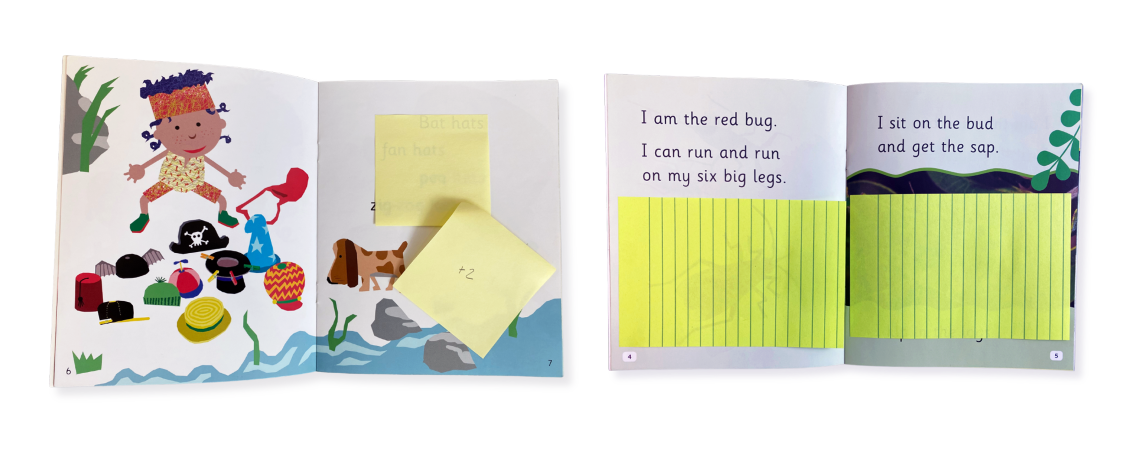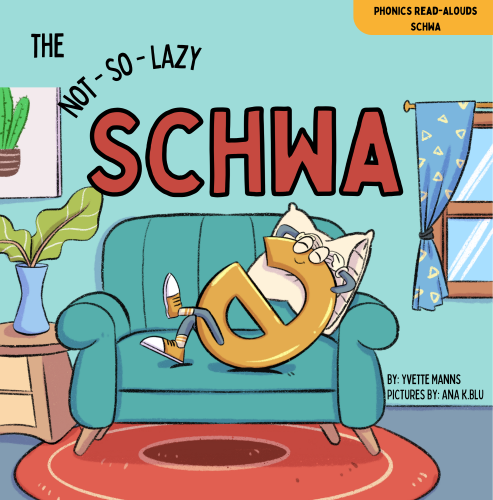Dr. Maria Murray’s 10 Tips for Using Decodable Texts
By: Dr. Maria Murray | September 24, 2024
If you’re looking to increase your students’ opportunities to practice decoding skills, you are in the right place. Dr. Maria Murray shares ten helpful tips for using decodable texts, but first, let’s take a closer look at what decodable texts are and how they support beginning readers in developing crucial phonics skills through structured and intentional practice.
What are decodable texts?
Decodable texts are a tool designed to help teach beginning readers (of all ages!) phonic decoding. Decodable texts are written specifically to ensure that the majority of words are phonetically regular, meaning that they are able to be sounded out by applying letter-sound relationships that students have been taught. Beginners need to understand the internal structure of words and pay attention to the letter-sound relationships and patterns in order to recognize and decode unknown words accurately and independently. Decodable texts are an excellent tool to provide intentional and frequent practice opportunities for students as they apply their new phonics knowledge to connected text to build automatic word reading.
1. Using Decodable Texts in Structured Literacy Classrooms
The use of decodable texts can be considered an integral part of Structured Literacy instruction because they align with the following Structured Literacy features:
- They are systematic: Teaching skills in the logical order of the English language—beginning with the easiest and most basic concepts and elements and progressing to those that are more complicated—can be readily achieved with decodable texts.
- Skills are cumulative: Each subsequent text will feature phonic concepts that have been previously taught while intermittently adding new concepts to be practiced.
- Instruction is explicit: Readers will receive direct instruction and will not be guided to deduce concepts on their own, rely on pictures or first letters in words to guess what words are, etc.
2. Knowing Basic Phonics Components
You’ll be more successful teaching with decodable texts if you know basic phonics components (e.g., digraphs, blends, syllable patterns, etc.). Visit these links to brush up on phonics terms and syllable types:
- Learning at the Primary Pond’s blog post, Phonics Terms That Every K-2 Teacher Should Know is a comprehensive post about phonics terminology.
- Reading Rockets Six Syllable Types by Louisa Moats and Carol Tolman is an excellent explanation of syllable types.
- The Reading League’s Online Academy Knowledge Block covers Phonic Knowledge: What, Why, and How?
3. Matching Readers’ Phonics Knowledge to Decodable Texts
Decodability of a text is determined by what phonics skills the reader has learned and how well those skills are matched to the text itself.
The sentence “Sam ate a sandwich and had a cup of milk,” would be a good decodable text match for a beginning reader who has been taught consonant sounds (/s/, /m/, /t/, etc.), short vowel sounds (Sam, sandwich, and, had, cup, milk), digraphs (sandwich), blends (sandwich, milk), and the silent e pattern (ate).
This same reader would struggle to decode the sentence “The smooth stone tumbled over in the fast-flowing stream,” because they have not yet been taught vowel teams (smooth, flowing, stream), r-controlled vowels (over), consonant -le (tumbled), or affixes (tumbled, flowing). The second sentence would provide a lot of frustration but very little practice of the reader’s learned skills.
4. Guiding Students When Reading Decodable Texts
Using decodable texts in a lesson requires guidance that some teachers may not be used to providing. Here are some examples of appropriate guidance:
- If students become stuck on a word, point out the sound that isn’t correct, ask them the sound, provide the sound if necessary, and work with them to retry/reblend until it is smooth.
- Blending with the “I do, We do, You do” scaffold can be helpful.
- Read Reading Rockets Blog: I Do, We Do, You Do
- Watch Teach for Life’s I Do, We Do, You Do
- Have students pre-read words with the newly introduced phonics pattern before starting to read connected text. Students often become excited when they spot the new digraph or the silent e pattern they just learned!
- Discourage students from looking up at you when they become stuck on a word. Assure them that they have learned what is needed to be successful in decoding the word, and direct their attention back to the word in question.
- Don’t automatically give students a word if they miss it. Too often, teachers do the “heavy lifting” when it is better for the students to do the decoding work themselves.
- Discourage using the first letter to guess a word. Again, coach students through the words while pointing out that all sounds are important, not just the initial ones.
5. Using Pictures in Decodable Texts
Many pictures in today’s decodables intentionally provide low reading support. Use pictures to confirm what the student has read or as a way to increase engagement. Do not use pictures to help “read” an unknown word on the page.
6. Boosting Reading Stamina of Early Readers
For beginning and struggling readers, stamina can be low when working hard to decode the individual words while reading connected text. Be creative! Easy tweaks can make the lesson feel like a game.
- Provide single sentences from the decodable text on sentence strips first. When sentences can be read with accuracy, provide the book and tell the student, “Guess what? You already know how to read this book!”
- Cover images on each page with sticky notes. Then tell the student, “When you’re done reading the words, you can uncover the picture!”
- Cover the words on each page with sticky notes that have small point values penciled on the back (e.g., +2, +3). Then explain, “For each page of words you read, you earn the points on the back of the sticky note.” Tally them up as they read. You can even make it competitive: “If I read the page, I get the points. If you read it, you get the points.”
The Little Learners decodable fiction and nonfiction books are delightful stories that children can read by applying their phonics knowledge and are aligned with the science of reading.
7. Building a Decodable Text Library
Remember that it takes time to build a decodable text library. These tips can help schools to choose and organize their texts wisely.
- Organize decodables by phonics patterns.
- Include titles that are culturally relevant.
- Feature both fiction and nonfiction titles.
- Feature decodables with multisyllabic words for older students.
8. Using Multiple Text Types
Do not use only decodable texts with your students.
- Use multiple text types to ensure that students are exposed to grade-level information, and provide scaffolding when needed to allow student access.
- Read-alouds across genres and topics are also a great way to expose students to more complex concepts, vocabulary, knowledge building, oral language/listening comprehension, etc.
9. Achieving Accuracy
Use decodable texts until students can read the following syllable patterns with accuracy:
- Single syllables (real and nonsense) out of context with all syllable patterns
- Single syllables with digraphs and blends (e.g., pinch, plum)
- Common 2-syllable words with all syllable patterns, including some with the schwa sound.
If you’re not sure what the schwa sound is, take a look at these:
- Literacy Learn’s blog post, The Schwa Sound: What It Is & How to Teach It
- Yvette Manns’ schwa resources in The Reading League Shop:
10. Achieving Automaticity
Use decodable texts until students can read the words with automaticity, as this shows solidification of applying word analysis skills to decode words. If students are still decoding through sound-by-sound, laborious effort, oral reading fluency will be impacted, which can have a negative effect on comprehension. When students can read individual words with automaticity, overall reading fluency is facilitated. It’s when accuracy and automaticity merge that the world of reading really opens up for students!
Conclusion
Where can I find decodable texts?
The Reading League has been compiling a free comprehensive list of publishers’ decodable texts in response to educator requests. The list of decodable text options continues to grow, providing dozens of hyperlinked choices for teachers to explore as they build decodable libraries. Please note that this list serves to provide educators with a starting point for exploring available options that align with instructional goals, but is not an endorsement or recommendation of any of the texts listed.
The Reading League Online Shop offers an expansive collection of highly regarded professional books and resources dedicated to the science of reading. One of these resources, Little Learners Love Literacy Decodable Books and Games, was only available in Australia until The Reading League became the exclusive distributor in the U.S. Check out Pip and Tim; The Wiz Kids; Little Learners, Big World Nonfiction; and most recently, Fox Kid chapter books and workbooks. The back of each book provides insights about talking points, heart words, speed words, speed sounds, vocabulary checks, and more. While you’re there, check out the Junior Learning decodable book set and their other engaging activities that can help you implement lessons aligned to the science of reading.
Even before starting The Reading League, I advocated for using decodable texts as a tool for teaching students how to transfer learned skills to reading connected text as a step to accurate and automatic (fluent) reading. I’m so pleased that thousands of educators have come to realize their value in helping students become independent readers. There had been a part of me that thought such a day would never come! I love visiting schools and seeing the colorful array of decodable texts, and I especially love watching children proudly demonstrate their new reading skills.
-Dr. Maria Murray




